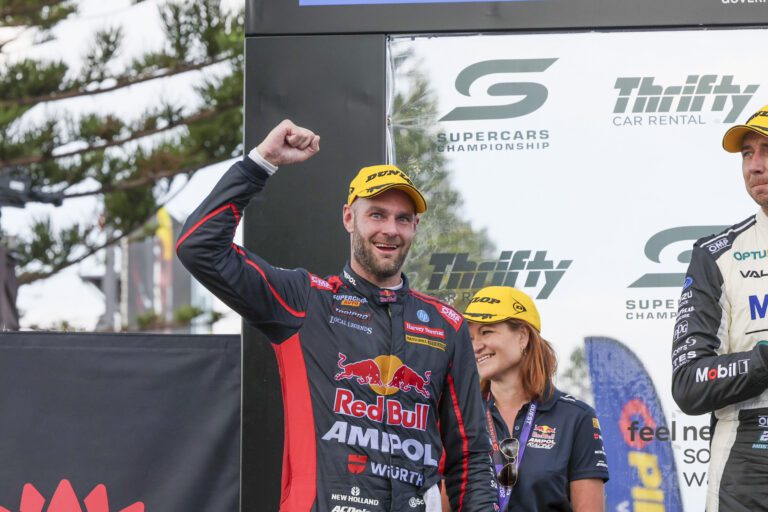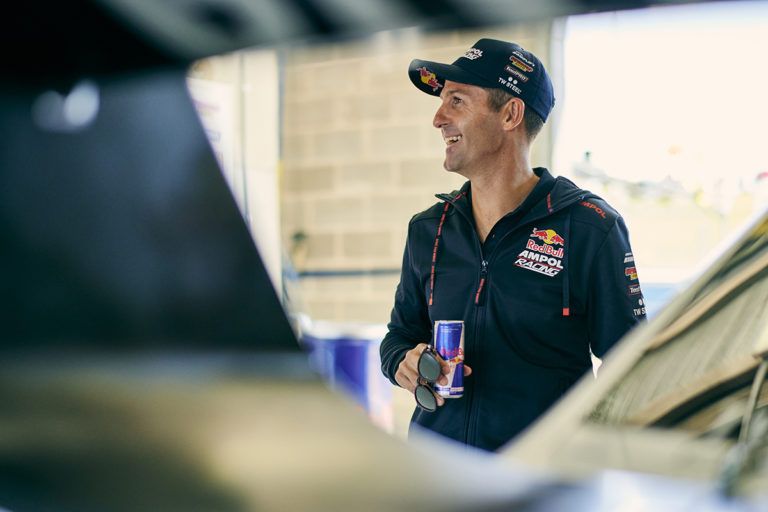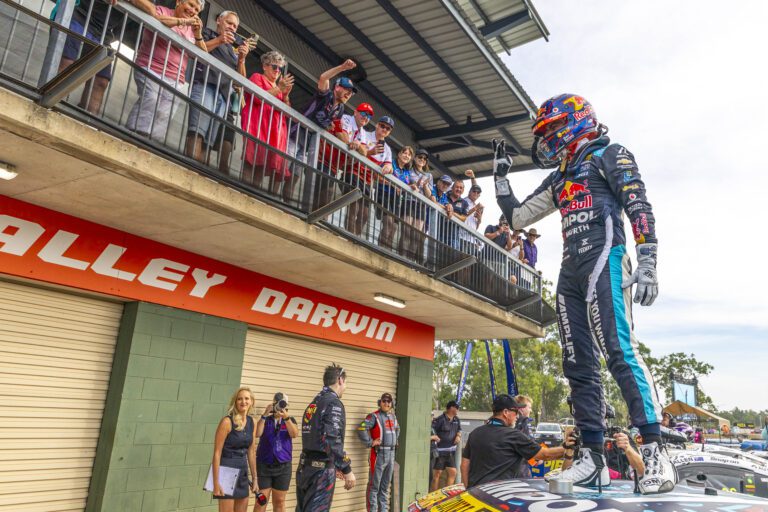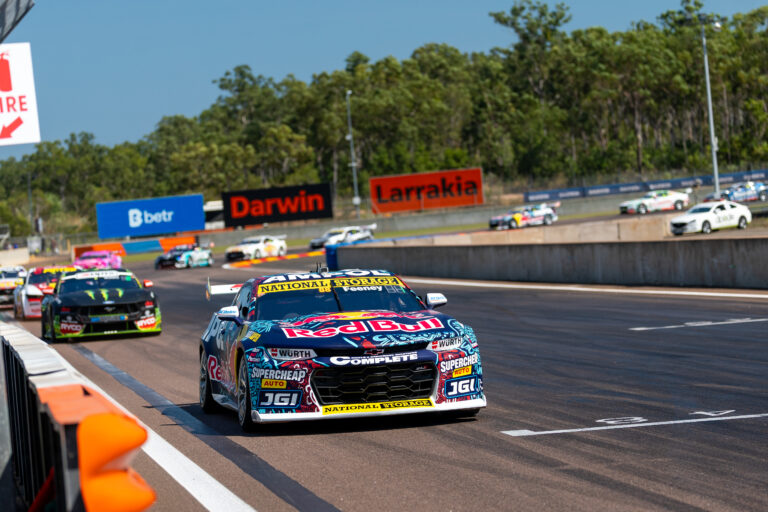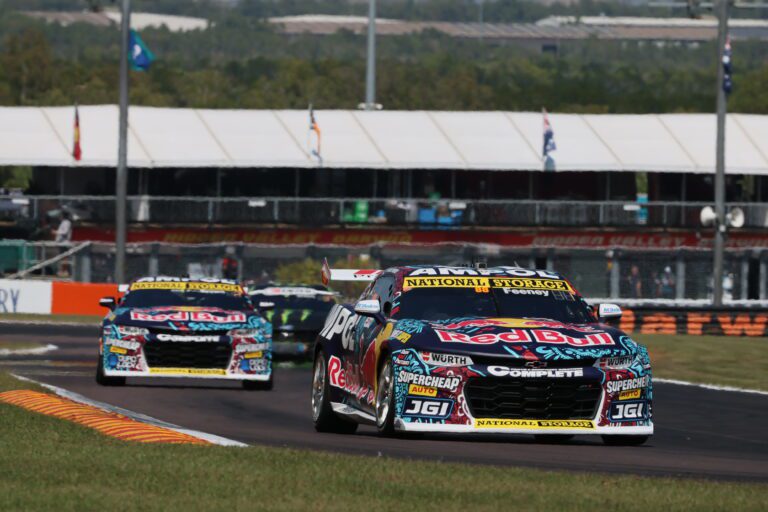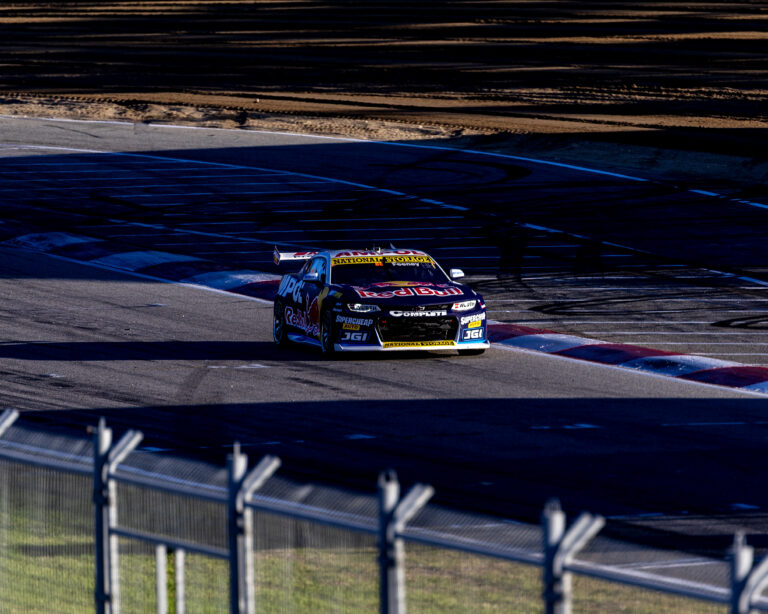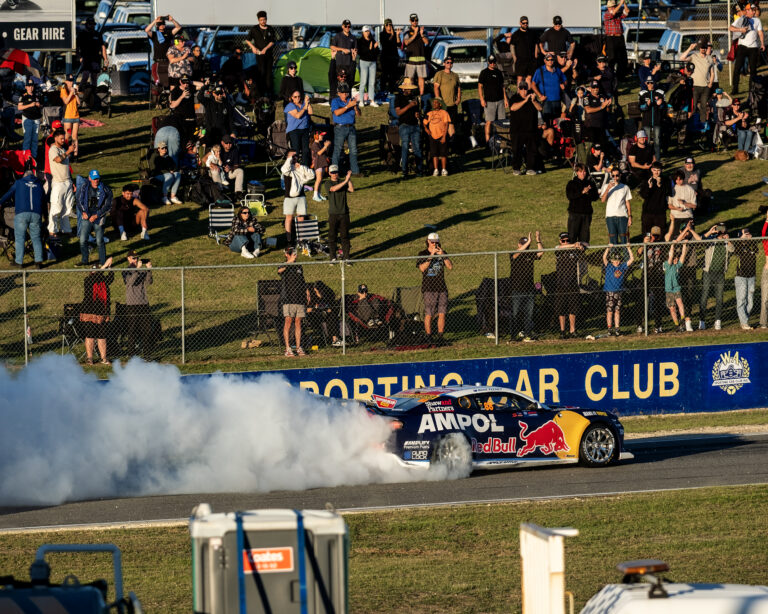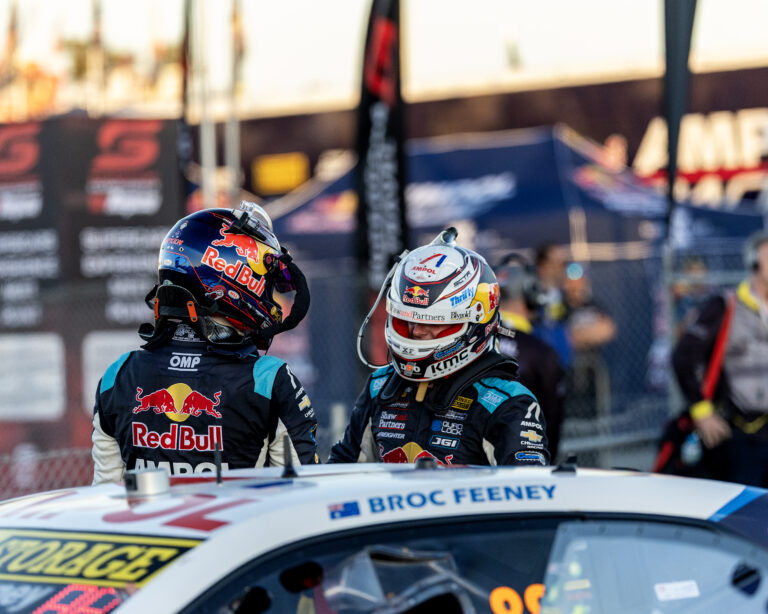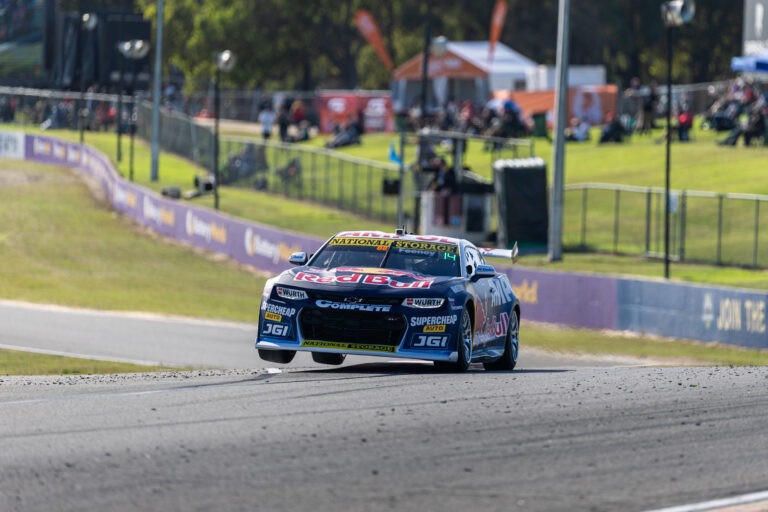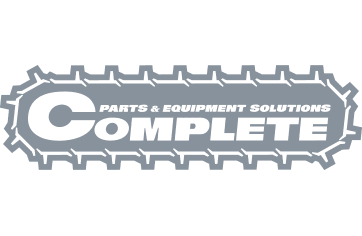Ever wondered exactly what happens to the cars before, at and in between races? We’ve pulled in No.1 mechanic on Car 1, Kris “Gooey” Goos, to give you the lowdown on how exactly these boys fill their very busy days.
Car Build
It all starts with the car build. These are not for the faint hearted. If you are building a new car you are either changing models, for example from the VE Commodore to the Car of the Future, or you have had a big shunt. Then it’s even worse because you have next to no time to build the new car. Before Sandown 2013 we built a car in five days. We were practically living at the workshop.
Car builds put the whole factory under pressure. For the COTF project we built seven cars plus spares in the space of a couple months. The days get longer and harder as the work load swells. It’s a treat to get any time off at all and that includes Sundays.
The days are filled with making hoses, fitting electrical looms, assembling fuel cells, building cool suit boxes, and once all the sub assembles are complete the car can start to be meticulously assembled.
Once the car is put together we will fit the V8 Supercar jig and measure all of the suspension and aero points. We will carry out a variety of other checks including fuel system capacity and flow, electrical systems and a mega torque check, just to name a few. By the time the car is complete, every bolt on the car will have been checked, checked again and then rechecked by someone else.
The final process in any car build or service is the set up. This is where the car is put on four level scale pads called the flat patch and has a verity of measurements made and adjusted to just what the engineer has asked for. These include ride heights, toe, camber, castor, wing angles and zeroing the roll bars.
At the Workshop
The car preparation starts with the unloading of the truck from the last race. The next step is to set the car down, so we put the car back on the flat patch and remeasure everything so we know if anything has moved.
The car is now disassembled. The list of parts to be removed is as follows: engine; bell housing; drive shaft; front and rear suspension; brakes including callipers; pedal box; steering rack and pump; transaxle; panels; and possibly the fuel cell as well. There’s not much left at this stage.
Everything is now cleaned and inspected with the engine going to the engine shop at KRE. The clutch and dampers go to the damper department. The transaxle, front and rear hubs, brakes, drive shaft, and steering rack and pump go to sub-assembly.
We use this time now to clean and prepare the rest of the car, crack testing, inspecting and servicing. If the race has been wet this job is much longer.
At this stage the car is put together in a similar way to the new car build, with everything being carefully checked three times over. You can never be too careful.
The truck is now packed with lists checked twice to make sure nothing is left behind.
At the Track
It all starts with a set up day when we unpack the truck, lay the floors and set up the walls, trussing, TVs and everything else that makes our garage look cool while being as easy to work in as possible.
The set up patch is put down and levelled, with the car put on the pads to check data and make sure nothing has changed on it since leaving the workshop. The rest of the day is spent doing checks and preparing for some on-track action.
The days we’re on track, we start off by weighing the car and carrying out all the V8 Supercar checks at their scales.
Next is pit stop practice – my favourite! This is our own little race between the boys, a good chance to get the blood flowing first thing in the morning.
The final checks are made before the session, whether that’s practice, qualifying or a race. The car is sent and within a few laps you’ve lost the little voice in your head asking if you checked everything.
During a practice session our time is taken up by preparing for any change the engineer might throw at us and then actually doing those changes on the car. These sessions are flat out, especially the short 20 minute ones we have now as you’re trying to get as much information as possible in a small space of time.
When it’s finally time to race we’re on standby in the garage all the time for a pit stop or in case of damage. We have to be able to react as quickly as possible to anything that might happen, whether it’s a pit stop earlier than expected because of a safety car, one or both of the cars coming in with damage or anything in between.
Once the car is finished on track for the day, there’s at least four hours of work to do. That’s if everything goes to plan and there’s no damage.
The race is now run and won and all the V8 Supercar checks are underway. Hopefully we’re cleaning champagne off the car too. Everyone packs up, the cars are put to bed and we can turn around and do the whole thing again tomorrow.
“Victory loves preparation,” as they say.

